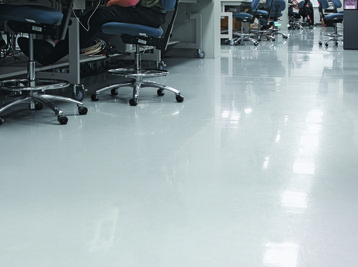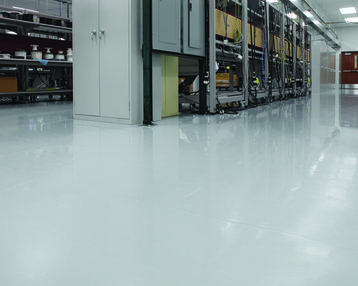The threats to data centers continue to increase in frequency. The critical issues requiring data centers to establish greater security measures or bolster existing procedures are often related to cyber-criminal activity and weaknesses in corporate and organizational defenses, including:
- Distributed denial of services (DDoS) attacks
- Web application attacks
- DNS infrastructure attacks
- SSL encryption, both inbound and outbound
- Weak authentication controls
With data being the lifeblood of any modern enterprise - and both revenue and reputation dependent upon its security - efforts to mitigate these threats must be continuous and vigilant.
A specific threat to the equipment
Because today’s global economy relies so heavily on complex data storage systems and server solutions, it is of vital importance to consider everything that can possibly affect the smooth and continuous functioning of the equipment itself.
Since integrated circuit technology can be highly sensitivity to electrical interference, static discharge presents a major
concern. This is often given short shrift, compared to monitoring and preventing security attacks. However, it can be just as lethal. It takes 3,500 volts for a human being to feel some level of shock, whereas a mere 25 volts can damage more sensitive computer parts.
This can result in a range of issues, from incorrect readings to permanent damage and shutdown of equipment. From a financial perspective, both are problematic. Incorrect readings can wreak havoc with maintenance and quality control; permanent damage can heavily impact the budget, as it often requires costly repairs or replacement of parts.
How static electricity is generated in a data center
Static electricity is the result of friction between two materials or surfaces possessing different levels of resistance. It can occur from the sliding, rubbing or separating of the two materials. One of the most common and major sources of static buildup is the act of an ungrounded individual simply walking across a floor. The static can then be further generated and transferred when personnel come in contact with equipment.
Supporting static control protocols with flooring
The good news is that company-wide static control protocols can effectively keep equipment and personnel safe. Practices may include the use of various specialty items, such as personnel grounding equipment, ESD clothing and work stations. Well-selected flooring possessing the right level of electrostatic dissipative (ESD) or conductive properties can make all the difference.
ESD vs conductive flooring
The distinction between ESD and conductive flooring lies in its level of resistance to electricity, measured in ohms. Higher resistance means less conductivity. It is, basically, a matter of how quickly and easily the charges go to ground.
The ESD/EOS Association defines conductive flooring as floor materials with a range of resistivity of one thousand to 1 million ohms; dissipative flooring has a resistivity range of one million to one billion ohms. The American Standard Test Method ASTM D257 is widely accepted for measuring surface resistance using an ohm meter.
Every data center is unique. Safety engineers within each location are best qualified to specify whether ESD or conductive flooring is required by their operation. However, on the whole, ESD flooring tends to be used in areas with sensitive electronics, while conductive flooring is most frequently installed in spaces where explosive hazards are present.
Dissipative and conductive flooring solutions
The market offers a number of flooring products and systems available in both the ESD and conductive categories. However, there are other aesthetic features to consider when selecting flooring, such as design, appearance and texture:
Most ESD flooring systems are available in various colors, however color options vary per manufacturer:
- A high gloss ESD flooring with a light color choice can help brighten low visibility areas in a facility, which in turn can help create a safer and friendlier work environment and simultaneously make it easier to see and find parts that may have fallen or been dropped on the floor.
- Satin finish ESD flooring can help deflect glare from overhead lighting and provide mild slip resistance.
Both epoxy and urethane static control flooring:
- Provide good to excellent resistance to the solvents and lubricants used in equipment maintenance.
- Offer outstanding durability.
- Are easy and economical to clean and maintain.
- Are typically low or zero VOC systems, so odors during installation are minimal or non-existent.
- May be capable of contributing to LEED Green Building credits.
Selecting the proper flooring for your data center
In addition to proper measurement and testing of electrostatic discharge, thoughtful consideration of the equipment, materials, personnel and typical activities in each room will help determine the optimal range of resistivity required of your new data center flooring. The ESD/EOS Association publishes a great deal of helpful information on standards and other relevant topics on its website. This can be an excellent place to begin your research and due diligence.
Additionally, be sure to work with an experienced, industry-leading static control flooring manufacturer that can help address all your requirements - from functionality to aesthetics - and ensure the best value for your budget.
Kendall Youngworth is a senior marketing specialist at Tennant Coatings




